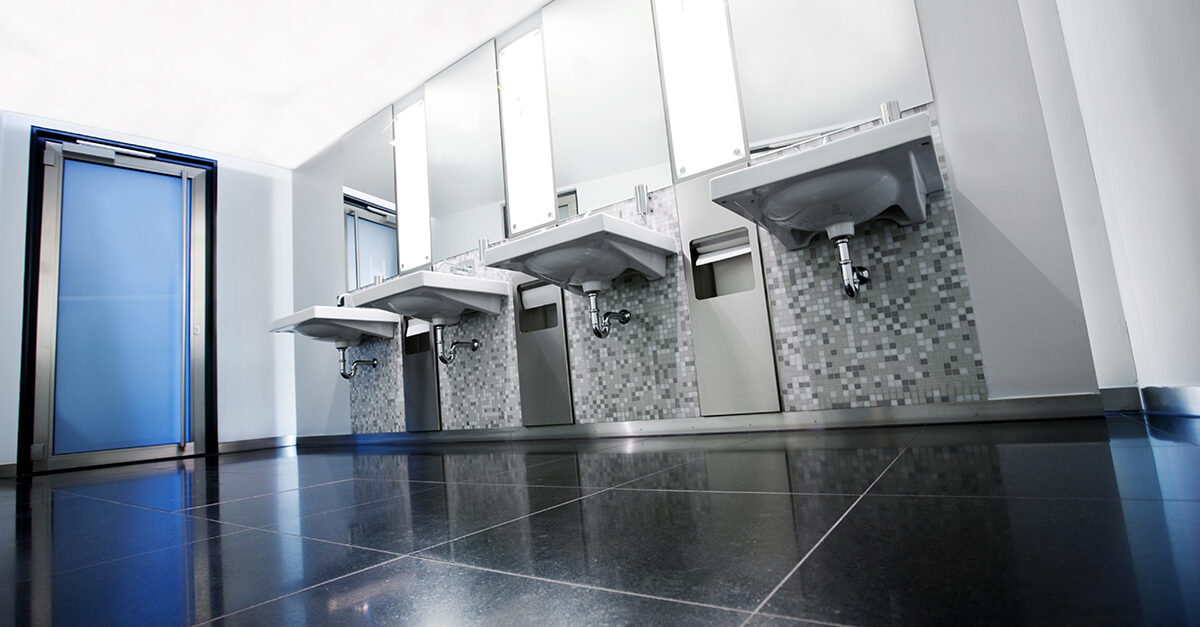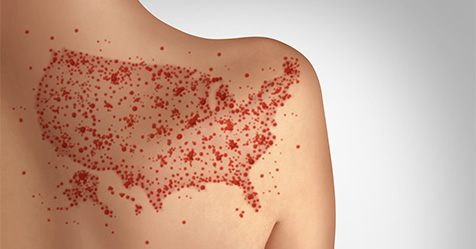Restrooms remain the hardest facility area to clean and maintain, according to the 2021 CMM In-House/Facility Management Survey. While cleaning expectations have always been high for these germy places, countless surveys conducted in the past year have shown that COVID-19 has changed public perceptions and expectations for restroom cleanliness for the long term.
For example, a March 2021 survey conducted by United Minds in cooperation with CINT on behalf of professional hygiene brand Tork, found 73% of people feel unsafe going to facilities with unhygienic public restrooms due to COVID-19. Further, 80% of the 1,102 survey respondents said they expect public restrooms to provide a safe hygiene environment to a higher extent now than before COVID-19.
“Due to the global pandemic, hygiene—especially in the restroom—has gone from ‘taken for granted’ to critical in people’s minds,” said Rachel Olsavicky, segment manager – Commercial, Essity Professional Hygiene. “These evolving hygiene perceptions will require restroom facilities to uphold a higher standard of hygiene. Recent research also revealed that if public spaces—restrooms included—do not practice proper hygiene standards, 52% of people surveyed said they would stop going there completely.”
A GP PRO consumer survey conducted last September found similar results when people were asked to share their typical public restroom experience and how confident they were in the cleanliness of the public restrooms they visited. Their general perception was that public restrooms are dirty, and they were especially concerned about touching unhygienic surfaces during the height
of COVID-19.
“In general, consumers would prefer to avoid these spaces, if at all possible,” said Julie Howard, vice president and general manager of GP PRO’s towel, skin care, and air care categories. “And when avoiding them isn’t possible, they just want to get in and get out.”
With a new focus on infection prevention, facilities stepped up their restroom routines during the health crisis with increased cleaning frequency, more thorough cleaning and disinfecting, and greater visibility of custodial staff and cleaning protocols. We should expect these best practices to stick around for the long haul, according to Howard and others who provide commercial restroom care solutions.
“Restroom users appear to have become accustomed to these changes as have facility managers and custodians, and I anticipate they’ll remain,” Howard said.
Cintas Director of Marketing John Engel said he expects more deep cleaning, especially during the day, and more outsourcing of restroom cleaning processes to become the norm as businesses continue to face labor shortages. He anticipates businesses will continue to promote their cleaning processes as well. “We’ve seen customers place stickers and decals on windows and mirrors, post cleaning schedules publicly, and even share videos of restroom cleaning on social media,” Engel said. “Continuing to communicate restroom cleaning protocols will help instill consumer confidence.”
Touchless restroom trends
Beyond these newly established cleaning best practices, other tangible ways facilities are meeting today’s restroom hygiene standards include switching to touchless fixtures and dispensers to prevent the spread of germs and testing more user-friendly products that get people in and out of the restroom more quickly. A shift from hand dryers to paper towels also seems to be trending.
“A message we have heard continuously throughout the pandemic was that an easy way to reduce the spread of germs is to limit the number of surfaces a person must touch,” said Sylvain Martin, senior product manager, Cascades PRO. “To keep germs at bay in restrooms and throughout facilities, we expect to see more and more facility managers incorporate touchless technologies. In the restroom, this may include touchless faucets, soap dispensers, toilets, and paper dispensers.”
The demand for touchless dispensers and other touchless items like auto-flush toilets has never been higher, according to Engel. Businesses are adding z-fold paper towel dispensers, which release towels one at a time without the need to touch a lever or a handle.
“We also see businesses moving away from air dryers, whether they are automatic or manual, as hot-air dryers are known to collect bacteria from the air and spread it onto freshly washed hands,” Engel said.
In the cited Tork survey, 36% of respondents said they feel unsafe entering restrooms with air dryers and 31% have an increased preference for paper hand towels due to COVID-19. The survey found the primary reasons for this preference are that users believe paper hand towels are more hygienic, are safer to use, and spread less bacteria into the air.
A poll of 1,066 adults commissioned by Cascades PRO found about 6 in 10 (61%) of respondents prefer paper towels from a touchless dispenser when drying their hands in a public restroom. About one-quarter of respondents (23%) said they prefer touchless air dryers.
Despite these preferences, using clean towels or air hand dryers are both effective ways to dry hands, according to the U.S. Centers for Disease Control and Prevention (CDC).
According to Martin at Cascades PRO, when considering paper dispensers for restrooms, facility managers should look for touchless options that not only allow for improved hygiene, but also enable greater productivity for their facilities.
“Quick-check technologies built into dispensers allow custodial staff to easily recognize when it is time for a refill, resulting in less time needing to be spent on checking the dispensers and more time to dedicate to cleaning the restroom,” he said.
Another aspect to consider is the size of the dispenser. A standard-sized touchless paper dispenser may be ideal for smaller facilities, but larger facilities should consider high-capacity dispensers to meet their high-traffic needs.
If a facility is looking to incorporate touchless dispensers on a limited budget, many companies have cost-effective retrofit solutions that allow new dispensers to be installed over existing recessed units, Martin said.
Susan Scapparone, director of product management for the Facilities category at Staples, parent company of Coastwide Professional, said before the pandemic many of their customers modernized their restrooms with touchless dispensers for towel, bath tissue, and soap units.
“Now many more are gravitating toward this trend because it’s healthier, more intuitive for restroom guests, and is a time- and labor-savings for facility managers and their staff,” she said. Scapparone noted that hygiene starts with the entry door. “We’re seeing more customers replace door handles and ask for touchless entries leading into a facility’s restroom as a way to curb pathogens.”
How to reopen with confidence
Facilities are being put to the test as reopening continues across the country. Facility managers are relying on touchless restroom dispensers to reduce the potential for cross contamination and high-capacity products to keep restrooms well-stocked and user-friendly.
Other ways to meet new expectations range from posting signage to communicate restrooms have been thoroughly cleaned and encouraging good hand hygiene by installing “smart” technologies that alert staff when dispensers are running low or help facility managers to set thresholds on restroom traffic before triggering cleaning.
Olsavicky at Essity suggests one way facilities can move forward confidently is to invest in data-driven cleaning. “With data-driven cleaning, people counters and connected dispensers capture and transmit real-time data on needs so cleaning teams can address what is needed, when and where it is needed, enabling them to act before complaints happen,” she said.
Martin offers these practical tips for successfully reopening your restrooms to the public:
- Make it known to your facility occupants that you are following CDC guidelines by keeping restrooms well-stocked and providing necessary updates on their state of cleanliness
- Emphasize a layered approach—keep hand-hygiene tools fully stocked, disinfect surfaces often, and keep touchpoints dry. Remind your occupants of the importance of handwashing and hand drying by providing step-by-step visual aids in stalls and near sinks.
- Empty garbage cans often. Bacteria, such as Salmonella, E. coli, and Listeria thrive in garbage cans.
“While public concerns regarding clean restrooms will continue, facilities can only benefit from being more proactive in keeping these spaces stocked, clean, and full of resources,” Martin said.
RELATED STORY: 3 Common Restroom Cleaning Mistakes to Avoid



